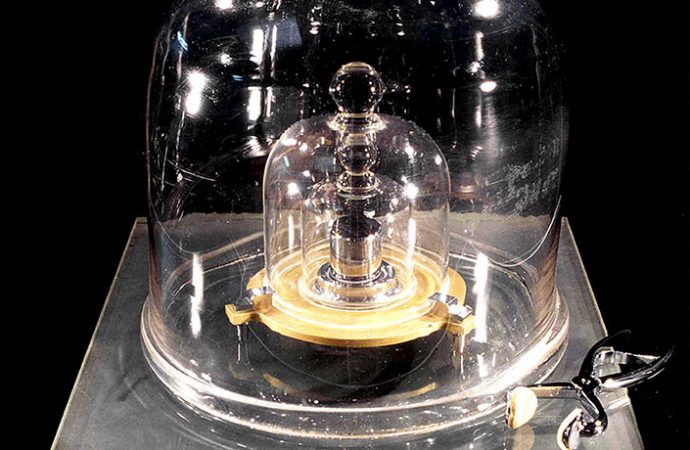The unit of mass is now defined by a fundamental constant of nature, not a hunk of metal
Source: Science News
The new kilogram has finally arrived.
Updates to scientists’ system of measurement went into force May 20, redefining the kilogram and several other units in the metric system. The revamp does away with some outdated standards — most notably, a metal cylinder kept in a vault near Paris that has defined the kilogram for 130 years.
Tinkering with units allows scientists to more precisely measure weights, temperatures, electric currents and other quantities laid out in the International System of Units used around the globe. The kilogram, the basic unit of mass, is now defined by a quantum quantity known as the Planck constant. That value, an immutable constant of nature, is the same everywhere in space and time. That’s an improvement over the Parisian artifact, which could have changed slightly if gunk or scratches marred its surface.
Also redefined, according to an agreement reached in November 2018 at the 26th General Conference on Weights and Measures in Versailles, France, are the kelvin, the unit of temperature; the ampere, the unit of electric current; and the mole, the unit for an amount of substance.
Scientists now have their sights set on updating the unit of time: the second.

Currently, the second is defined by atomic clocks made of cesium atoms. Those atoms absorb a certain frequency of light. The wiggling of the light’s electromagnetic waves functions like the pendulum on a grandfather clock, rhythmically keeping time. One second is defined as 9,192,631,770 oscillations of the light.
But a new generation of atomic clocks, known as optical atomic clocks, outdo the cesium clocks. “Their performance is a lot better than what currently defines the second,” says physicist Andrew Ludlow of the National Institute of Standards and Technology in Boulder, Colo. Because those optical atomic clocks operate at a higher frequency, their “ticks” are more closely spaced, making them about 100 times more precise than cesium clocks.
Ideally, the length of a second should be defined using the most precise timepieces available. A switch might happen in the late 2020s, Ludlow says.
The change to the kilogram’s definition was carefully orchestrated so that it wouldn’t affect normal people: A kilogram of flour still makes the same number of biscuits. Any change to the second will be similarly coordinated.
So, sorry, there’ll be no chance to squeeze any extra seconds into a day.

































Leave a Comment
You must be logged in to post a comment.